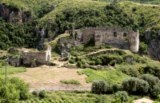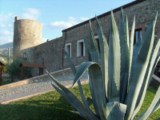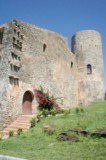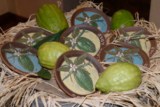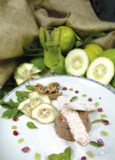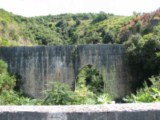|
SANTA MARIA DEL CEDRO - CALABRIA - SOUTH ITALY
HOTEL ROOMS ACCOMMODATIONS OFFERS IN SANTA MARIA DEL CEDRO
WHERE TO EAT WHERE TO HAVE FUN EXCURSIONS SPONSORS At 3km distant from the sea, on a 118m high hill rises the little village of Santa Maria del Cedro, right at the edge of a large plain that before our Christian era was a bay whose waters washed a shore up to the track of today's railway line.
If one visits the Town Hall one can see two enormous frescoes that used to adorn the Byzantine abbey within the castle precincts. If you visit the Town Hall, just ask the clerk to see them. Santa Maria Del Cedro, steeped in history and at one time an important trade and fortifying position, is now a tranquil village. Local industry is almost entirely agricultural, with the primary crop being Cedro a unique citrus-fruit plant. The Cedro plant's flowers are used to make commercial perfumes and many delicatessen foods, like the candied cedro, to be savoured as sweet or dessert, or the cedro liqueur, similar to the well known Limoncello, also a great digestive at the end of a full tipical calabrian meal or even the very typical Panicelli, made with home-grown grape raisins wrapped in Cedro leaves and roasted in wood ovens. Drive downhill from Santa Maria del Cedro to find the Carcere dell'Impresa, an old prison that was remodeled lately and now hosts the Museum of the Cedro. The museum has its culminating moments during its annual mid September Festival del Cedro in which you can indulge in liqueur, cakes, preserves, perfumes and candied fruit all based on cedro. The area's farmers also harvest olives, grapes and figs, which are the basic ingredients for the area's wonderful culinary specialities that visitors can sample at a handful of restaurants located in the town's centre. Santa Maria Del Cedro, is not only a great teourist destination, is also a wonderful place to pass through, if only to catch a glimpse of its long and unique history. You will find a modern Itallic community, but one whose ways have persisted from long before the birth of Christ.Aieta is an historic Calabrian hill town dominated by an imposing Renaissance mansion, which has recently been converted into an art gallery and museum that showcases some of the most well-known artists in Calabria during the summer months. The museum as well as the local shops in Aieta, that showcase the works of local artists and craftsmen, speak to Calabria's history and the various cultures which have dominated the area through time. For visitors interested in local craftsmenship, some may want to purchase some of the fabulous embroidery for which Aieta is justly renowned for. It's worth the trip in and of itself to Aieta, just to view some of these specacular goods. In addition to these wears, there are a number of fascinating things to see in Aieta, including the Churches of Saint Maria della Visitazione, San Francesco and Addolorato al Ponte. In addition to the churches, there is an archeological site, known as Aieta Vetere, with remains from C. 1000 and several grottos, which have been converted to shrines, that visitors with time to explore, should make a point of seeing. Much of the pleasure however, in visiting the town of Aieta is the simple, rustic way of life, visitors are exposed to. Taking a day or a few hours to walk around this historic village, one may very well feel they are not only stepping back in time, they are living it. |
||||||||


